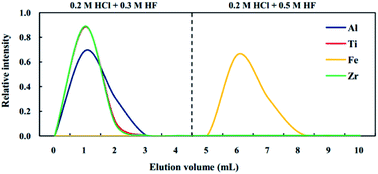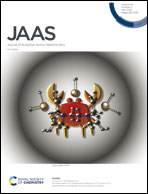A novel procedure for separating iron from geological materials for isotopic analysis using MC-ICP-MS
Abstract
Here we report a novel and simple chromatographic procedure, involving the use of a single column packed with AGMP-50 cation-exchange resin, for separating Fe from geological matrices. This procedure was found to be suitable for both routine samples and samples with high contents of Cu. In our experiment, high-field-strength elements (HFSEs) and Al were first eluted using 4 mL of a mixture of 0.2 M HCl and 0.3 M HF, and then Fe was collected by using 6 mL of a mixture of 0.2 M HCl and 0.5 M HF. The residual matrix elements, such as Na, Mg, K, Ca and other trace elements, could not be eluted by such a mixture of dilute HF–HCl solutions, which enabled us to remove matrix elements effectively and enabled a recovery of Fe of close to 100%. The robustness of this procedure was further evaluated by carrying out replicated analyses of a series of geological reference materials, including basic rocks, intermediate rock, acidic rock and Mn-nodules. All of the Fe isotopic analytical results were, within analytical uncertainties, essentially identical with the data published previously. Therefore, this method may be a great option for purifying Fe from geological samples for isotopic analysis.



 Please wait while we load your content...
Please wait while we load your content...